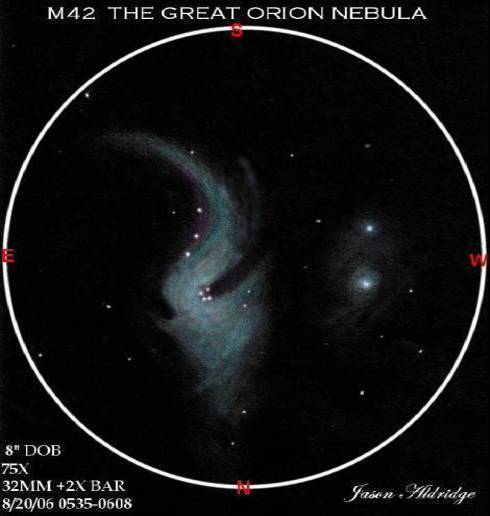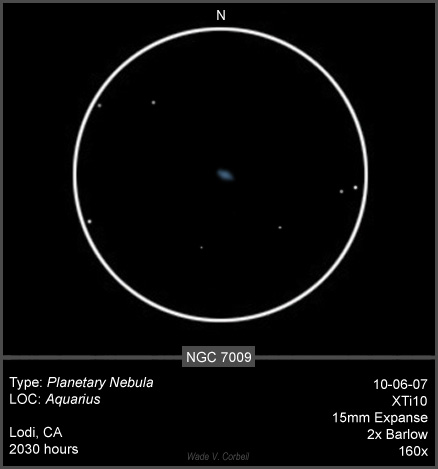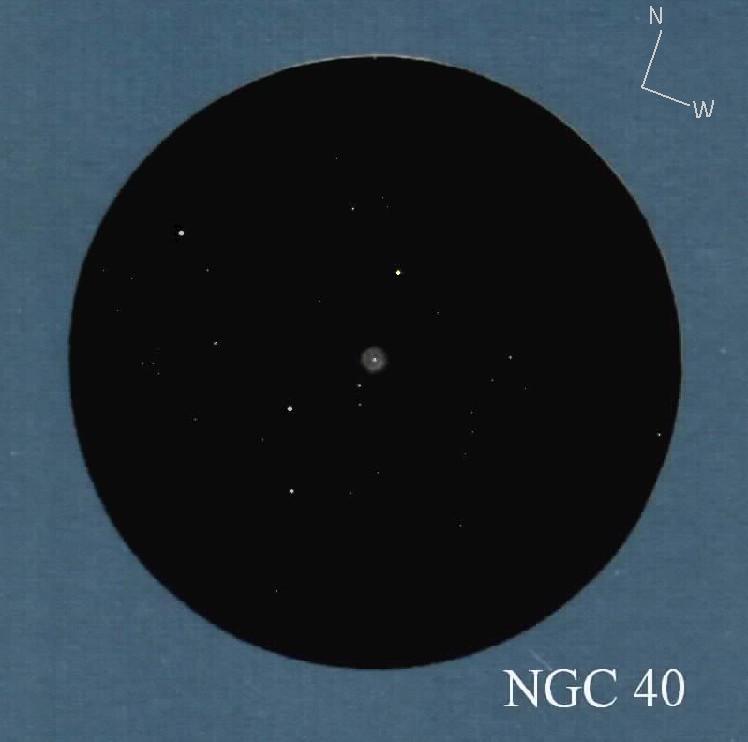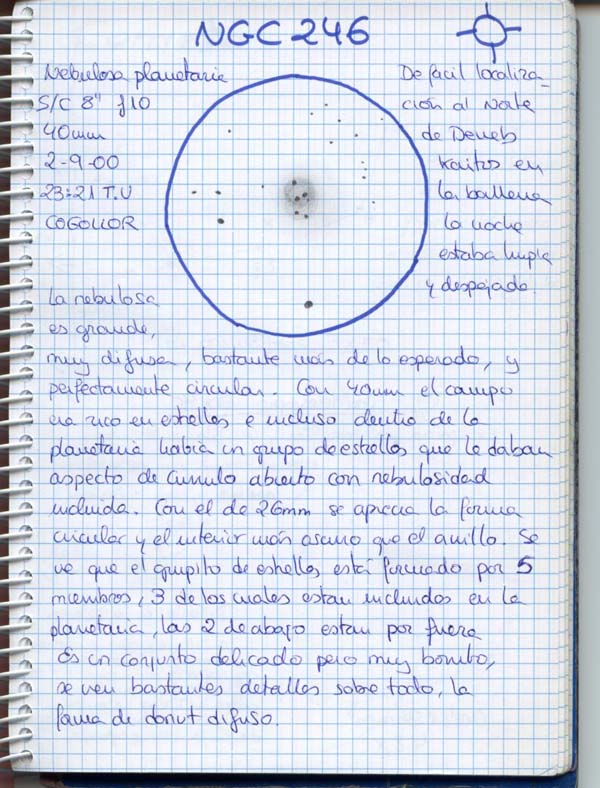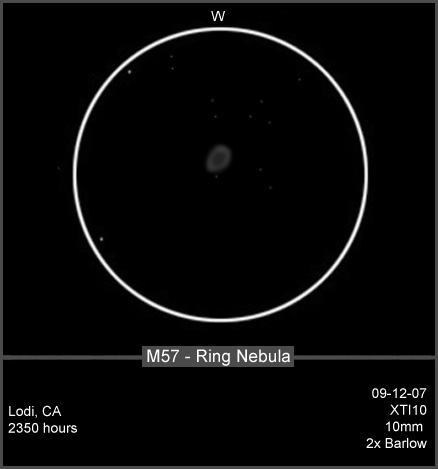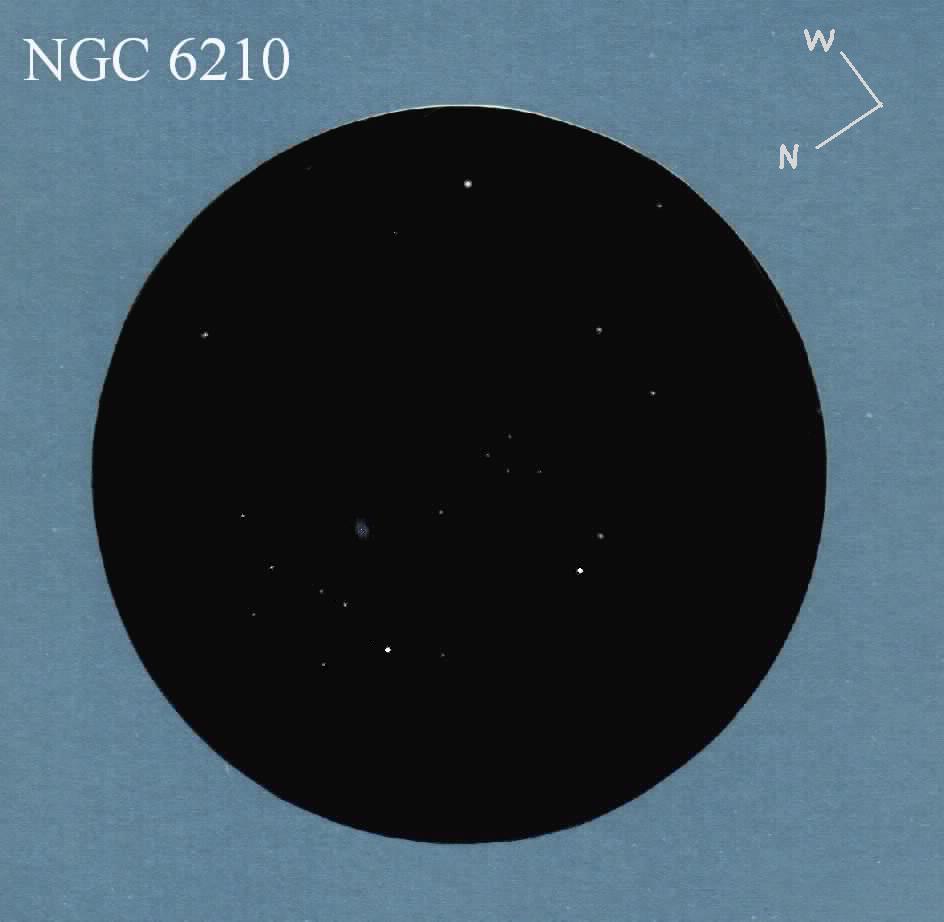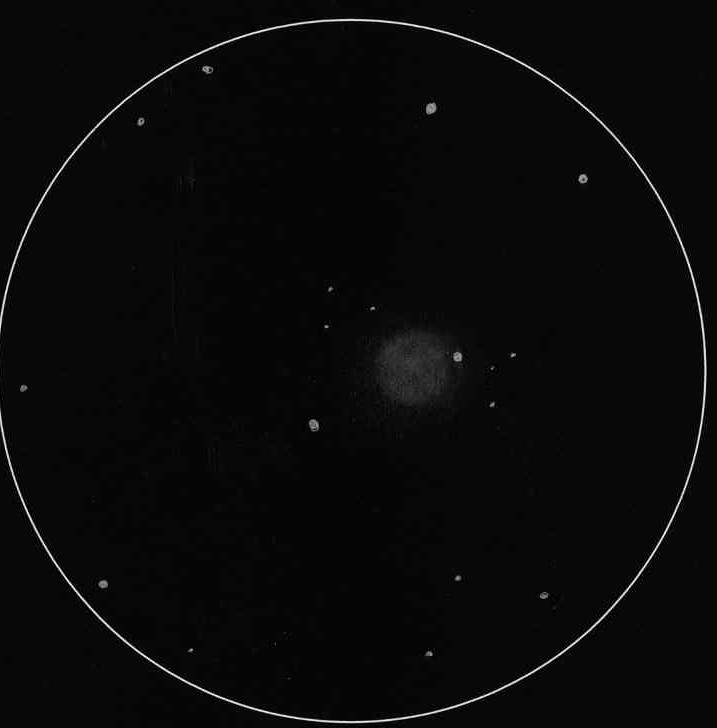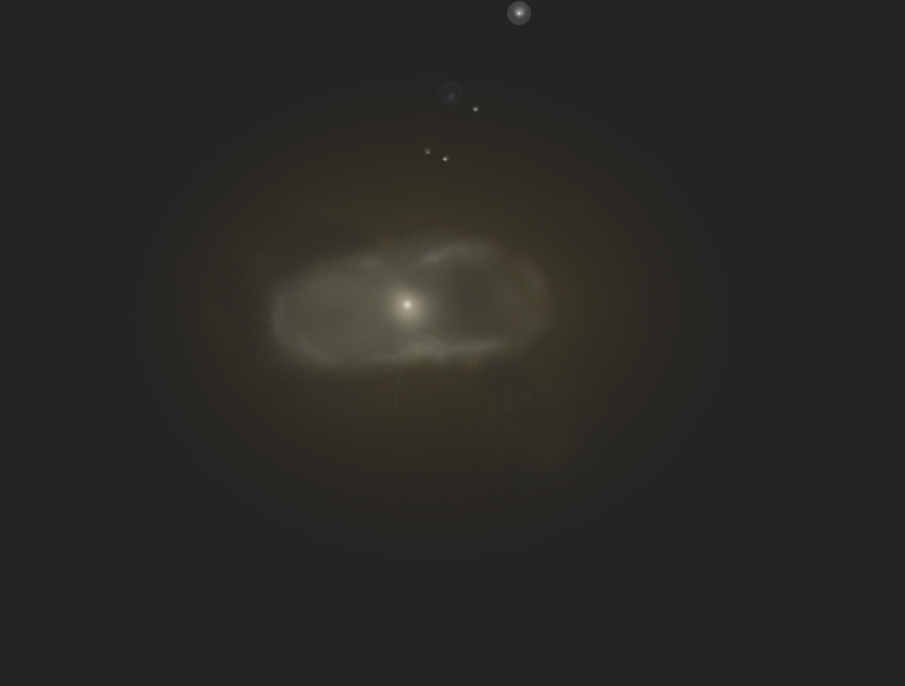
The Homunculus Nebula is one of my personal favorites when it comes to southern
hemisphere deep sky objects. I was favored with good seeing conditions one evening
and attempted a sketch using a soft lead pencil.
The Homunculus (Latin for “little man”) surrounds the notoriously variable star Eta
Carinae. Using a 4mm Plossl with a twelve inch f/10 Schmidt-Cassegrain (~760X), this
peculiar reflection nebula resembled a pale yellow bipolar planetary nebula. At
times, I thought the bipolar lobes appeared as a weak reddish color but I could
never hold the sight long enough to be certain. The disc was quite irregular in
shape and displayed much subtle detail. Eta Carinae was also of a subtle yellowish
tint. Indeed, Eta is included in the list of “red” stars compiled by George Chambers
back in the late 19th century.
The ASOD drawing was copied from the original sketch using Photoshop. The airbrush,
blurring and dodging tools were used.
Dave Riddle
Smyrna, Georgia USA

